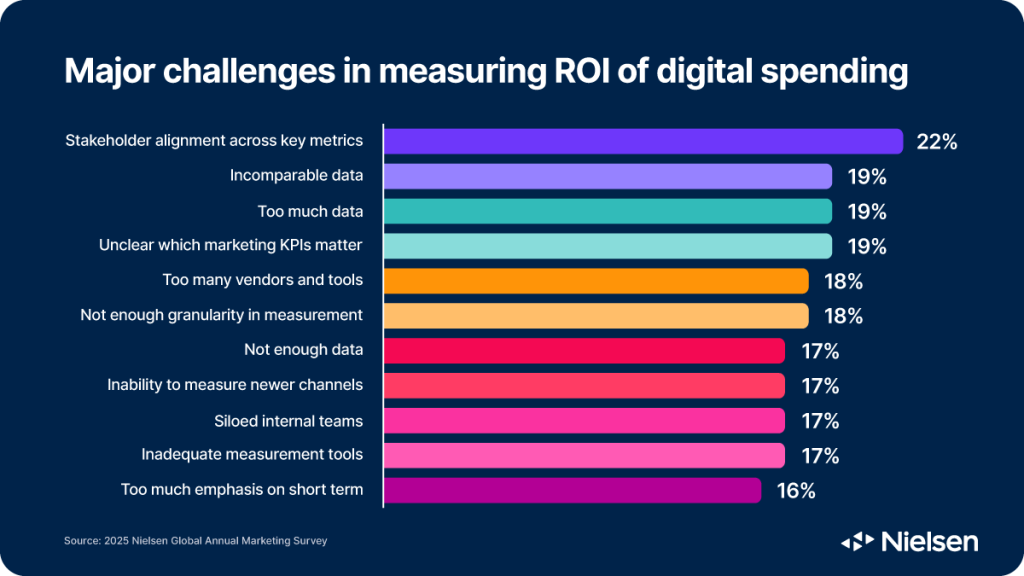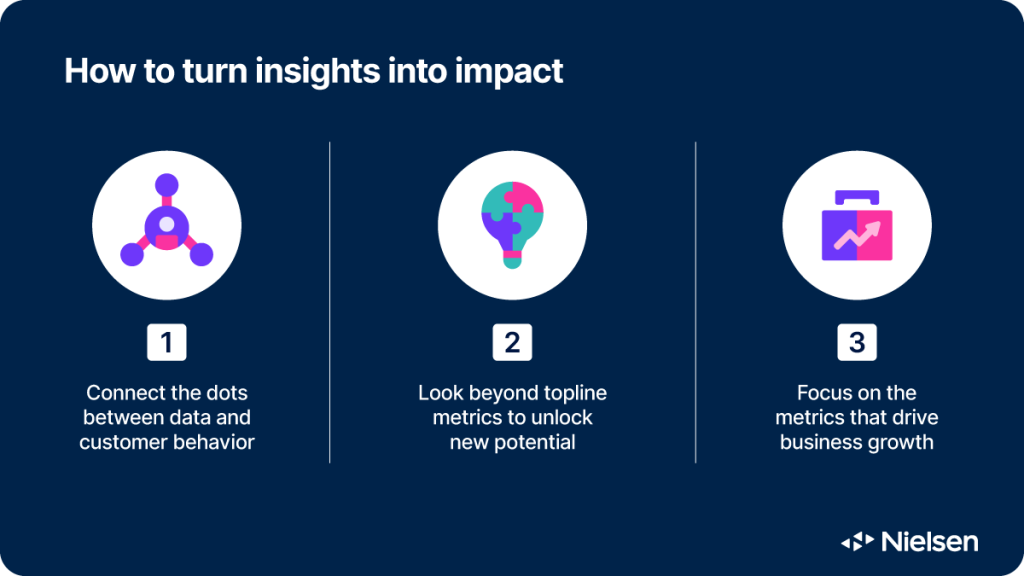The marketing ecosystem continues to expand, offering an ever-growing set of tools, data sources, and analytics platforms designed to connect investments to measurable outcomes. Organisations are investing in these capabilities with the goal of improving transparency, comparability and consistency in how performance is assessed.
Beyond these technological advances, the nature of measurement within marketing is also changing. The focus is shifting from not only what data is available, but also to how it is interpreted and used to guide decisions. As marketing objectives diversify—spanning brand building, performance and customer experience—so do the metrics that define success. This inherently brings to light differences in priorities across teams, markets, and functions.
Seen in this context, the challenge is not purely technical. It involves the strategic alignment of objectives, timelines and definitions of success to ensure that data serves a shared strategic purpose. The opportunity lies in connecting measurement more closely with intent, so that insight leads to impact.
Aligning metrics with meaning
Marketing measurement often produces more numbers than clarity. Organisations can track impressions, clicks, engagement, conversions, and spend across multiple platforms. Yet understanding which metrics truly reflect business impact remains a common challenge. The 2025 Nielsen Global Annual Marketing Survey asked marketers to identify their top two challenges in measuring ROI, and organizational alignment and clarity emerged as the most pressing concerns.
Citing stakeholder alignment across key metrics as their top challenge, 22% of marketers show that measurement is most effective when teams share a common understanding of what success looks like. In this context, it’s easier to see why 19% of marketers highlighted unclear KPIs and the sheer volume of data as a challenge—without clarity on what to track, even abundant data can be difficult to interpret.

At the same time, 17% noted siloed internal teams as a barrier. When teams work in isolation, differences in priorities and reporting practices make it harder to translate data into actionable insight. Operational hurdles also persist—incomparable data is a top challenge for 19% of marketers, and too many vendors or tools is a hurdle for 18%. Adding more tools to a fragmented plan only makes the fragmentation more visible. The real leverage point for improvement, however, remains the clarity of the overall marketing strategy. When strategic clarity exists, sophisticated tools can reveal sharper insights and highlight actionable opportunities, ensuring that campaigns are both efficient and effective.
Bridging the strategy gap
Agreeing on the right metrics is only the first step. Alignment alone does not guarantee that measurement translates into insight. Our 2025 Marketing ROI Blueprint shows a gap between confidence and execution—85% of marketers feel confident in tracking holistic performance yet only 32% actually measure holistically. This discrepancy highlights the strategic dimension of measurement. Measurement is not just a technical task but a capability that connects teams, clarifies priorities, and ensures that data drives meaningful decisions. Without this strategic link, even aligned metrics can remain disconnected from real business outcomes.
Simple adjustments can make a difference, such as ensuring key KPIs reflect business priorities, checking that teams interpret metrics consistently, and connecting insights across channels all help turn confidence into actionable clarity.
Turning insight into impact
When measurement in marketing aligns with strategy, it moves beyond reporting activity to shaping decisions. It reveals which investments are performing, where resources can be optimised, and how the full picture of marketing impact comes together. Here is how you can take practical steps to make data work harder.

- Translate trends into strategic moves: High-performing teams interpret patterns in context—connecting campaign performance to broader customer behaviour or market shifts. This enables subtle adjustments in messaging, timing, or budget to produce measurable results.
- Uncover latent growth areas: A holistic view of performance often reveals what topline metrics overlook. Deeper analysis exposes patterns that point to new audiences, refined messaging opportunities or untapped channels. As 18% of marketers report that not enough granularity in measurement is a challenge, the value of precision becomes clear. Richer, more detailed insight doesn’t just explain past performance—it guides where growth will come from next.
- Invest where it counts: Not all metrics are equally valuable. Effective marketing strategies focus on signals that directly influence revenue, customer retention or long-term brand equity—turning insight into resource allocation decisions that meaningfully affect business outcomes.
Driving impact through clarity
The true measure of marketing impact is the clarity of insights that drive action, maximizing value beyond raw data volume. When metrics are interpreted in context and connected to business priorities, marketers can allocate resources effectively, optimize campaigns, uncover growth opportunities and maximise marketing ROI.
Our 2025 Marketing ROI Blueprint highlights how marketers are moving beyond fragmented tracking to a holistic approach that links strategy, performance and growth. It demonstrates how strategic clarity allows teams to prioritise high-value actions, uncover hidden opportunities, and optimise investments for sustained impact. Download the report to explore the full findings and understand how your measurement approach can evolve from activity-focused to outcome-driven turning insight into tangible business results.



